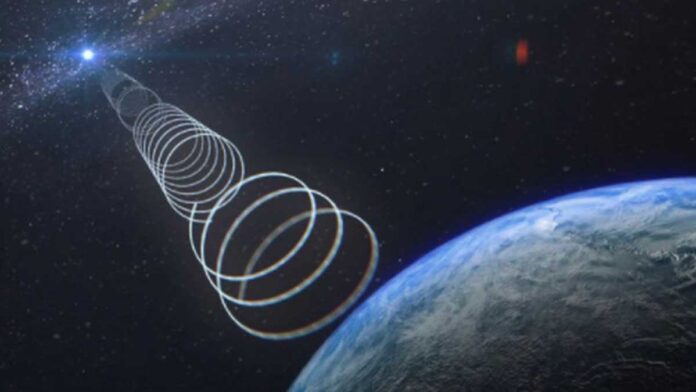Scientists have uncovered the source of the mysterious radio signal that took eight billion years to reach us.
A new research presented during the 243rd meeting of the American Astronomical Society in New Orleans, Louisiana, said the most distinct and ancient fast radio burst (FRB) came from a location that dates halfway back to the Big Bang.
Astronomers led by Northwestern University in the United States have found the origin of the most powerful FRB, detected in 2022. The researchers traced the FRB, dubbed 20220610A, back to a group of at least seven galaxies using images captured by NASA’s Hubble Space Telescope.
Their findings suggest the galaxies appear to be interacting with each other and might be en route to a merger.
Such rare interactions among galaxies lead to conditions that can trigger an FRB. According to experts, the new research raises questions about all the previous scientific models of FRBs.
Lead researcher Alexa Gordon of Northwestern University said, “Without the Hubble’s imaging, it would remain a mystery, whether this FRB originated from one monolithic galaxy or some interacting system. It’s these types of environments – these weird ones – that drive us toward a better understanding of the mystery of FRBs.”
FRBs are short but strong radio bursts that flare up and disappear within milliseconds. They produce more energy in one quick burst than the Sun emits in one year. FRB 20220610A was the most distant fast radio burst recorded, four times more energetic than closer FRBs.
Scientists have discovered up to 1,000 FRBs since first discovering them in 2007. However, the sources behind most of them remain unknown. Earlier studies suggested that FRBs generated near an unidentifiable, formless blob consisting of a single, irregular galaxy or a group of three distant galaxies.
However, in the case of FRB 20220610A, there might be at least seven galaxies in incredible proximity to one another. They are so close that all could fit inside our Milky Way. The study’s co-author, Wenfai Fong, an associate professor of physics and astronomy, said: “There are some signs that the group members are interacting.
In other words, they could be trading materials or possibly on a path to merging. These groups of galaxies (called compact groups) are incredibly rare environments in the universe and are the densest galaxy-scale structures we know of.”










